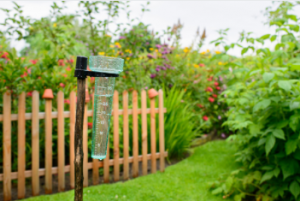If you’re a new gardener and have no idea what a rain gauge is, it’s pretty simple to explain. Think of a rain gauge as an accurate tool that measures the amount of precipitation that falls on your screen. The more accurate you make your rain gauge, the more precise your rain gauge will be. Note that all rain gauges will measure rainfall – not the exact amount of rainfall. However, that’s not the only difference between an accurate rain gauge and one that’s simply making fun of the fact that you’re using an instrument that has no actual measuring ability.
 Note that rain gauges come in two kinds, manual or automated weather measuring instruments (AWS). Manual rain gauges require a person to set the meter from time to time manually. Therefore, it may result in a person missing a significant storm that will affect the accuracy of the rain gauge measurement. Automated rain gauges, by contrast, do not require any human intervention to work. Instead, they receive information from an outside source – such as a computer – and calculate the rainfall based on the data or tell you if the rain gauge has measured too much rain.
Note that rain gauges come in two kinds, manual or automated weather measuring instruments (AWS). Manual rain gauges require a person to set the meter from time to time manually. Therefore, it may result in a person missing a significant storm that will affect the accuracy of the rain gauge measurement. Automated rain gauges, by contrast, do not require any human intervention to work. Instead, they receive information from an outside source – such as a computer – and calculate the rainfall based on the data or tell you if the rain gauge has measured too much rain.
There are two basic categories of rain gauges with different levels of rain gauge accuracy. In the first category, we have those that are manually operated and those which are automated. The main difference between them is how the instrument is set up. A rain gauge that is manually operated has a dial that you can quickly move up or down to measure the amount of precipitation. A rain gauge with a mechanical gadget has a display screen where you can easily see the measurements.
There are two ways to use a rain gauge. First, you can look at the reading on the cylinder and use the decimals to determine the rainfall. Second, you can use the local weather online site to get more accurate readings.
When you measure the rainfall, you should make sure that you measure where the level of precipitation is similar to what you expect to get. For instance, if it is raining slightly, you will need to adjust your measurements because your local weather station may be recording inaccurate measurements. For instance, please note that many measurements are taken with different degrees of precision when it is raining a lot. For this reason, it is essential to go around and take the measurements in different places where the level of precipitation is different from what you expect.
A digital rain gauge uses a two-level cylinder with a piston that rotates horizontally. You need to place the cylinder right next to the area where you want your rain gauge measurements. It will allow you to have the most accurate results possible. There are four different types of rain gauges that you can use for your home. These include a single point rain gauge, double point rain gauge, tipping bucket gauges, and rain gauges with a tape hook.
The single point rain gauge is one of the most fundamental rain gauges that you can find. It records the amount of precipitation that falls on any particular day. The double point rain gauge has two levels to measure the precipitation that falls on two different days. The last type of rain gauge is the tipping bucket gauge, which is the most elaborate type of rain gauge that you can find.
A tipping bucket gauge will record the rainfall for an entire week. It is great if you want to know how much rainfall you have received over a long period. The measurements for this type of gauge are more accurate than the other types. You will also find digital rain gauges, which will allow you to determine the precipitation in inches. The digital gauge is easier to use and does not require you to turn the handle to check the rainfall manually.
If you’re ready to buy your first rain gauge, click here now.